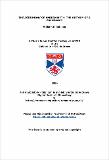Files in this item
The astronomy of Andean myth : the history of a cosmology
Item metadata
| dc.contributor.advisor | Gifford, Douglas | |
| dc.contributor.author | Sullivan, William F. | |
| dc.coverage.spatial | 415 | en_US |
| dc.date.accessioned | 2010-09-21T14:40:48Z | |
| dc.date.available | 2010-09-21T14:40:48Z | |
| dc.date.issued | 1986 | |
| dc.identifier.uri | https://hdl.handle.net/10023/1011 | |
| dc.description.abstract | The paper aims to show that Andean myth, on one level, represents a technical language recording astronomical observations of precession and, at the same time, an historical record of simultaneous social and celestial transformations. Topographic and architectural terms of Andean myth are interpreted as a metaphor for the organisation of and locations on the celestial sphere. Via ethnoastronmical data, mythical animals are identified as stars and placed on the celestial sphere according to their "topographical " location. Tested in the planetarium, these "arrays" generate clusters of dates - 200 B.C. and 650. A. D. Analysis of the names of Wiraqocha and Manco Capac indicates they represent Saturn and Jupiter and that their mythical meeting represents their conjunction in 650 A.D. The astronomy of Andean myth is then used as an historical tool to examine how the Andean priest-astronomers recorded the simultaneous creation of the ayllu and of this distinctive astronomical system about 200 B.C. The idea that the agricultural ayllu, with its double descent system stressing the importance of paternity, represents a transformation of society from an earlier matrilineal/horticultural era is examined in light of the sexual imagery employed in myth. Wiraqocha’s androgyny and the division of the celestial sphere into male (ecliptic) and -female(celestial equator = “earth” ) are interpreted as cosmological validations of the new social structure. | en_US |
| dc.language.iso | en | en_US |
| dc.publisher | University of St Andrews | |
| dc.title | The astronomy of Andean myth : the history of a cosmology | en_US |
| dc.type | Thesis | en_US |
| dc.type.qualificationlevel | Doctoral | en_US |
| dc.type.qualificationname | PhD Doctor of Philosophy | en_US |
| dc.publisher.institution | The University of St Andrews | en_US |
This item appears in the following Collection(s)
Items in the St Andrews Research Repository are protected by copyright, with all rights reserved, unless otherwise indicated.

